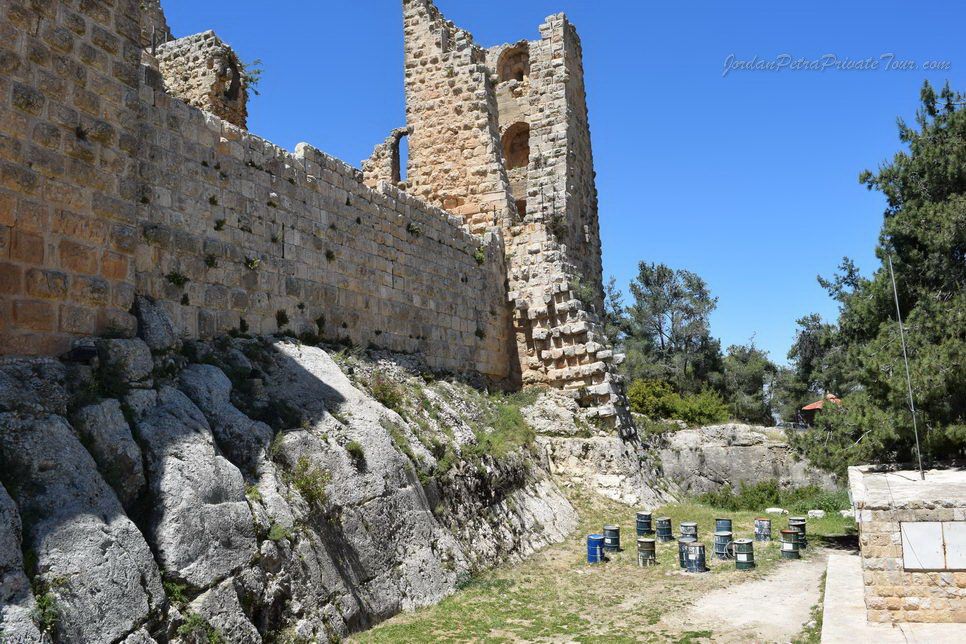"On the way I saw a valley running down to the river Jordan, remarkably beautiful and very well kept, and it was full of vines and trees because there was plenty of good water there " Egeria, 4th century AD
Ajloun :
Between the city of Ajloun and the Jordan Valley, walkers wander from an Arab citadel to Byzantine mosaics and Roman ruins, through expansive forests and green Wadi, enjoying the hospitality of villages in between. At the center of the path lies the area of Al Ayoun in which three communities have pioneered community tourism and homestay hospitality.
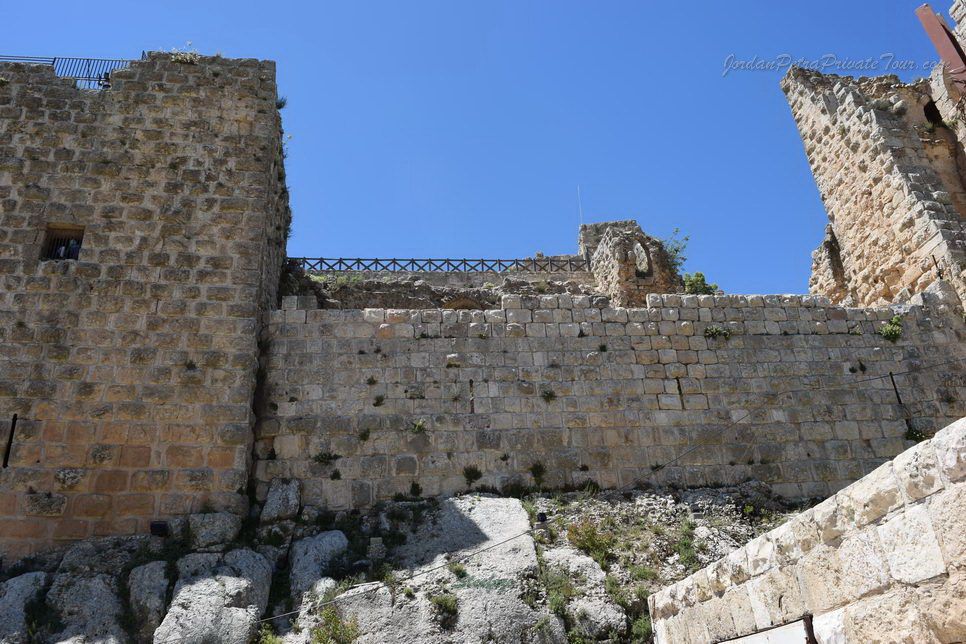
Attractive Sites in Ajloun City
1- Ajloun Castle:
Feel like the king of the world clambering atop this impressive stone castle, a stone playground commanding an astonishing view over the Jordan Valley, strategically built to defend against Crusader invasion in the twelfth century.
Like a scene from a medieval fantasy, the Ajloun Castle rises above the Jordan Valley, with towers, turrets, drawbridges, moats, and secret passageways. The commanding 360º view of the surrounding scenery illustrates how this castle fortress kept tabs on the roads and resources below as far back as the twelfth century.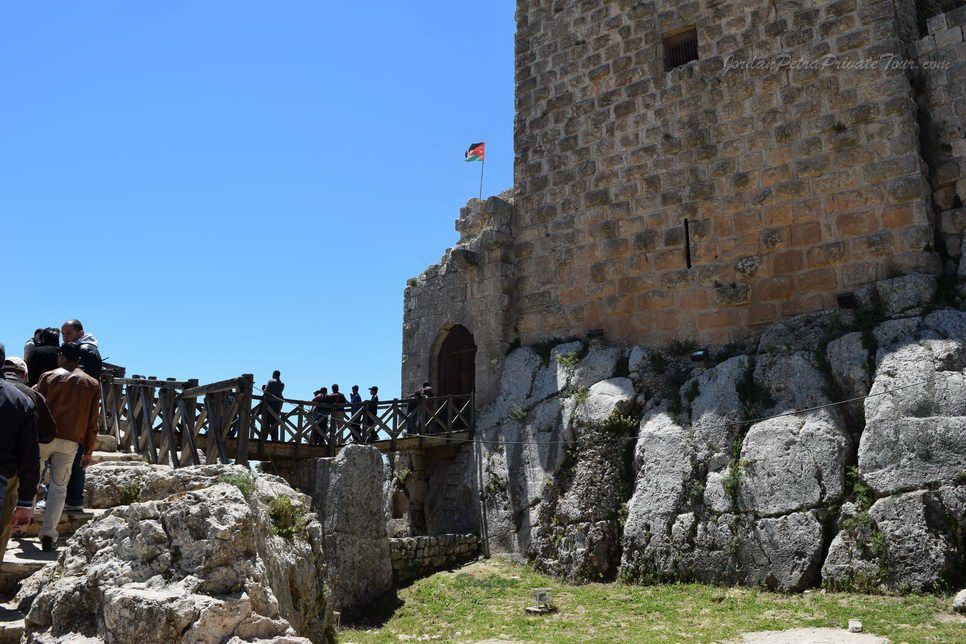
History :Ajloun Castle was built in 1184, by the nephew of the famous Ayyubid Muslim conqueror Saladin on the site of a former monastery. Ajloun may have been given its name after that of a monk who inhabited the monastery during the Byzantine period, but after the construction of the castle it was known as Qala’at al Rabadh, which means literally “citadel on a hill.” The name illustrates what Saladin was trying to achieve when he commissioned this fortified hilltop: controlling the expansion of the Crusaders; maintaining communications between Damascus, Cairo and the other Arab strongholds; overseeing the important nearby trade and pilgrimage routes; and controlling the iron mines in the area used for the production of weaponry.
The castle was taken over, used and expanded throughout the course of history. An interesting account is made by Johann Burckhardt (the same Swiss traveler known for the rediscovery of Petra) who found the castle in 1812 inhabited by the members of the Barakat family, a family name still well known in Jordan today.
As with many of the sites in Jordan, what finally brought down this imposing structure was an earthquake – one in 1837 and the other in 1927. The Jordanian Department of Antiquities began the much needed restoration works in the 1950’s.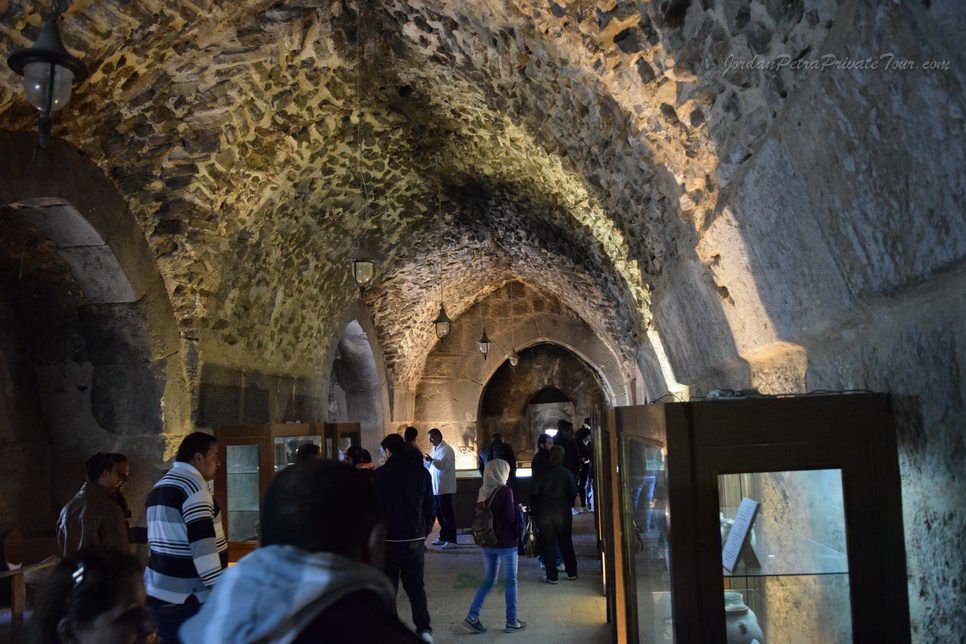
Ajloun Castle is open from 8am to 4pm in the winter and 8am to 6.30pm in the summer. Tickets cost 0.25JD for Jordanians and residents, and 1JD for non-Jordanians
Not far from Ajloun is the tomb of the venerable companion Ikrimah bin Abi Jahal. One of Prophet Mohammed s (PBUH) bitterest enemies until he embraced Islam, he later distinguished himself by contributing to the spread of Islam. Martyred in the Battle of Yarmouk, he also took part in the wars of Apostasy and the conquest of Syria.
Also in Ajloun is a shrine for Al-Khadir (St. George). While not a prophet, St. George was a righteous worshipper and a popular saint. He has many shrines in Jordan as a number of miracles were revealed through him. His famous story with Prophet Moses can be found in the Holy Qur an.
Other nearby sites include the birthplace of the Prophet Elijah at Listib and the Church of St Elijah at Khirbet Mar Elias
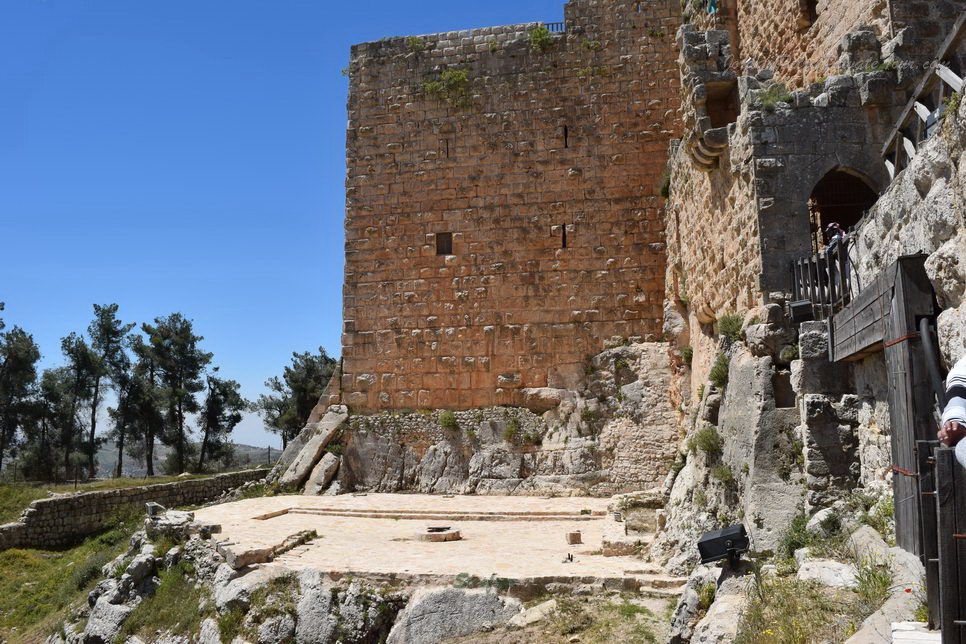
2- Anjara
In Anjara, in the north of Jordan, there is the Our Lady of the Mountain Church - a rebuilt cave that is venerated as a place where Jesus and his mother Mary passed during their journeys between the Sea of Galilee. Anjara was designated by the Vatican as a Millennium 2000 pilgrimage site..
3- Jesus Cave
Everyone in Jordan seems to know a local legend about the Jesus Cave, whether about Jesus hiking with his followers, why the tree is always drunk, or why women tread grapes better than men.
This cave was first known as the Soldier’s Cave, however in 1999 Spanish priest identified this as the cave mentioned in the extra-biblical Gospel of Barnabas that Jesus rested in with 72 followers and 12 disciples when fleeing from the soldiers of Herod. Of course, no physical evidence exists that can link Jesus to this particular cave, but references in the Bible do indicate that Jesus traveled this area.
Jesus had left Nazareth to the shores of the Sea of Galilee (modern Lake Tiberias) and when he learned that Herod’s men were chasing him, he fled to Gadara (modern Umm Qais and where he performed the miracle of casting demons into a herd of swine). Jesus made his return journey to Jerusalem and on that trip he supposedly stopped in this cave to rest.
Other than being a possible place where Jesus took shelter, the cave was also much used in the Roman/Byzantine period as an olive and wine press. The olive press inside the cave itself has been restored. Adnan Megdadi, one of the guards at the site, is always happy to open the gate and let visitors explore inside.
The network of basins and channels above the cave are thought to be a wine press and the story goes that the people who worked at the press held a competition every year to elect the girls with the best legs who would be allowed to tread the grapes, because of course treading grapes requires bare feet and hitched up skirts. The roots of the ancient oak tree trail mischievously into a rock cut storage basin that may have held wine in its time, giving rise to the tale of the drunken tree, although nobody will admit to having tried to drink its sap.
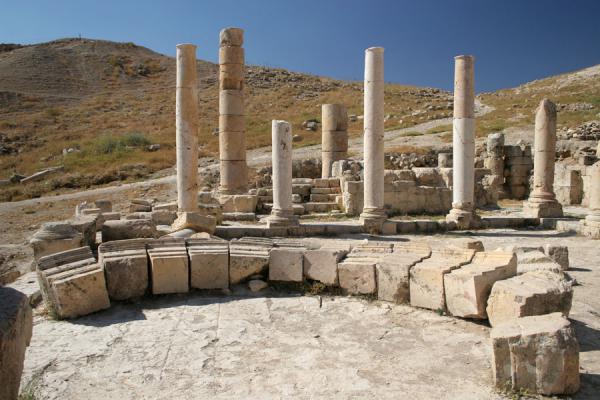
4-Pella
From the few columns, paving stones and other remains which are visible in Pella today it’s hard to imagine the importance of this site or its immense size, which has been inhabited for over 10,000 years, from the Neolithic period right through to the Ottoman rule of the area in the late 1800s.
What attracted early settlers to the site is also what kept subsequent civilizations from settling at Pella: access to a permanent source of fresh water which still flows today, and a strategic location on several important trade routes. And interestingly in each period of occupation, Pella appears to have been a flourishing, affluent, influential city.
Although permanently and continuously occupied, several eras stand out as particularly important and worth a mention. For example during the Bronze Age (approx. 3,000 BCE to 1,500 BCE) Pella reached a peak in size and wealth and archaeologists were surprised to discover in the 1980’s the largest Bronze Age temple in Jordan. The Hellenistic period was also a time of particular affluence for Pella, and it is also the first time that the name ‘Pella’ occurs in written records, which is the name of the birthplace of Alexander the Great. Under Byzantine rule, Pella continued its role as one of the ten administrative centers of the Decapolis, but it also became the seat of a Bishop. In fact, Pella was at its largest in terms of square meters, during the Byzantine period and hosted three Basilicas, one of which is still visible today.
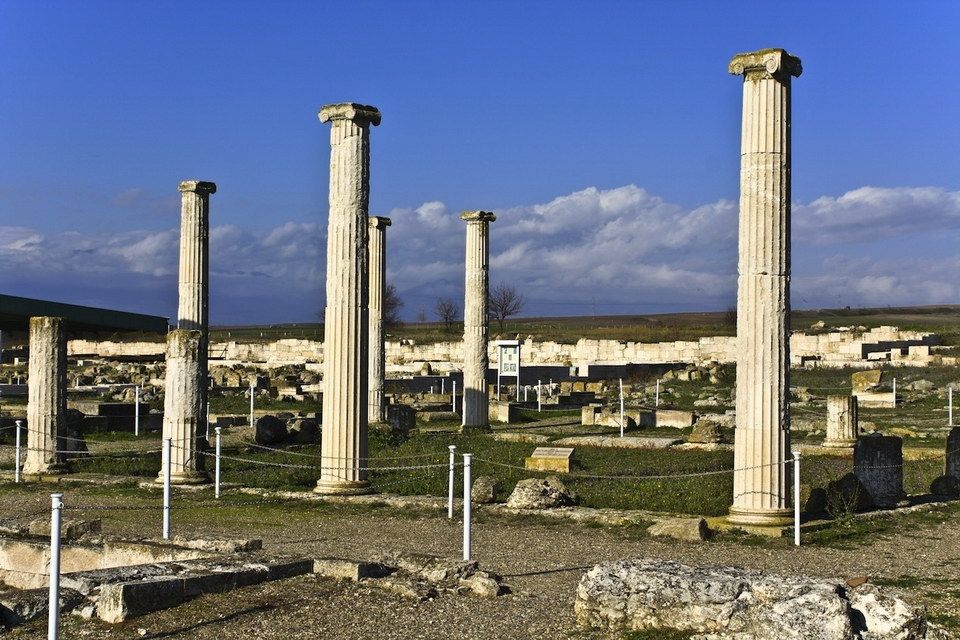
Pella also played a significant role for followers of the Abrahamic faiths. The Roman historian Josephus recorded the sacking of Pella in 83 BCE by the Hasmonean leader Alexander Jannaeus because the inhabitants “would not bear to change their religious rites for those peculiar to the Jews”. Subsequent Roman domination of the area saw Pella incorporated into the Decapolis, and it is in Pella that the Christians of Jerusalem sought refuge from the onslaught of the Roman army during the First Jewish Revolt of 66 CE. Pella became a primarily Christian city under the Byzantine rule, only to fall to Muslim forces in 635 CE. The inhabitants of Pella converted over time from Christianity to Islam and the large churches which had dominated the skyline under Byzantine rule were dismantled and reused.
The real and very final downfall of the city was not due to man’s influence, but a huge earthquake in 747 CE which destroyed most of the standing structures and gave us Pella in almost the same state that we see it today.
Logistical information: Tabaqat Fahl is the name of the modern village close to the ancient site of Pella which is managed by the Department of Antiquities. Entrance is 1JD for foreigners and 0.25 JD for Jordanians and Residents. The site is open from 8am to 6pm in the summer, and 8am to 4pm in the winter.
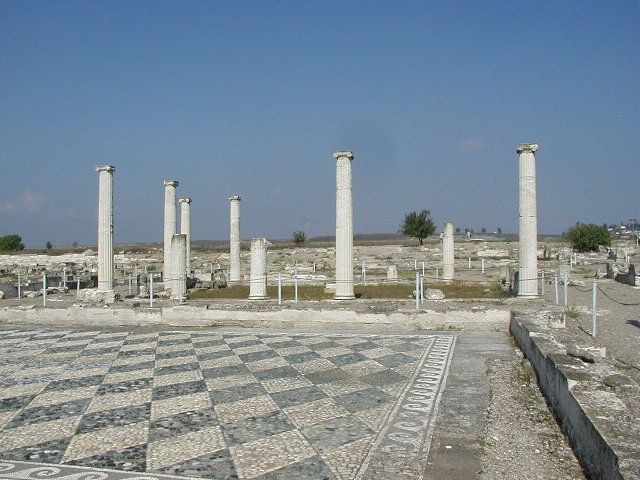
5- Mar Elias
Location: about 10 km to the N/W of Ajloun overlooking Gilead, lies Tel Mar Elias (Mar Elias in Arabic means Saint Elijah). This site has long been identified with Tishbe, the birthplace of Elijah.Tell Mar Elias
Archaeologists discovered one of the largest Byzantine churches in Jordan at Tell Mar Elias. The church dates back to the 7Th century, 622 AD is the most probable year. What distinguished this church is its cross-shape structure; which is a very rare style.
Also known as (Khirbet al Wahadneh), located at few kilometers away from the Zarqa River, small natural hill, outside of Ajloun city, it is believed to be hometown and the birthplace of Prophet Elijah, an ancient site of pilgrimage, it has one of the largest Byzantine churches in Jordan and with series of tombs beneath, and colorful mosaic floors.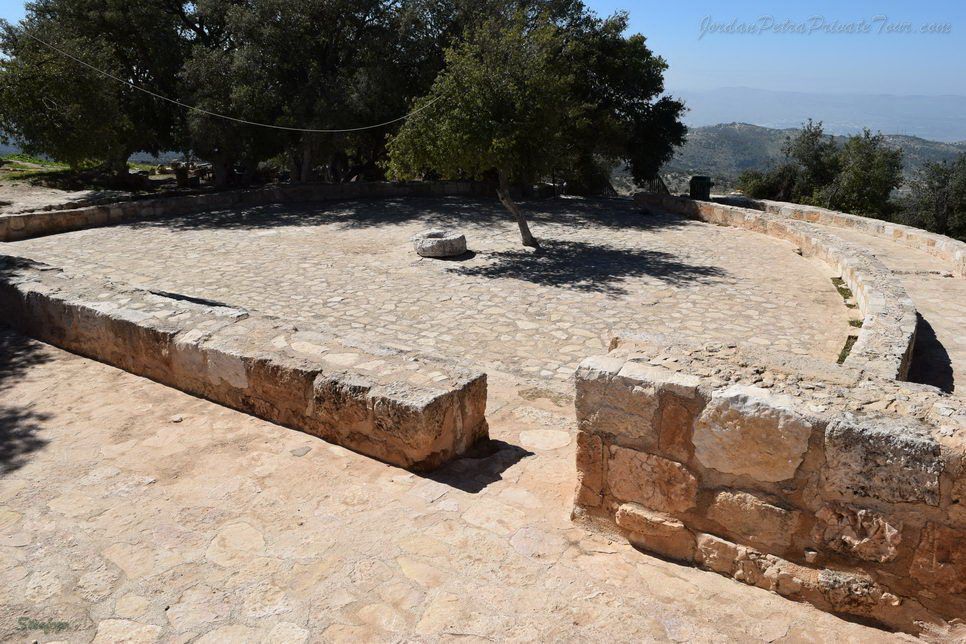
History: Prophet Elijah emerges from the land of Transjordan about a century after the time of David and Solomon, the site has since been identified as the ancient town of Listib, associated with the Biblical town of Tishbe, the site first inhabited in the Roman and Byzantine periods, also includes a Mamluk-era mosque at the southeastern base of the hill alongside the remains of another, earlier Byzantine church.
In the midst of stunning carpets of mosaics stands a sole prayer tree, its popularity attested by hundreds of pieces of cloth that adorn the branches like blossoms, holding a prominent place at the traditional birthplace of the prophet Elijah.
The remote ruins of the churches of Mar Elias hold sacred significance to followers of the Abrahamic faiths as the traditional birthplace of the Prophet Elijah. Elijah was a dramatic prophet, best known for defending monotheism, raising the dead and calling down fire from heaven in a showdown against the god Baal. In the Bible he is referred to as the one who precedes the coming of the Messiah and in the Qur’an he is listed among the ‘righteous ones’ with Zachariah, John the Baptist and Jesus and as one of the messengers of God.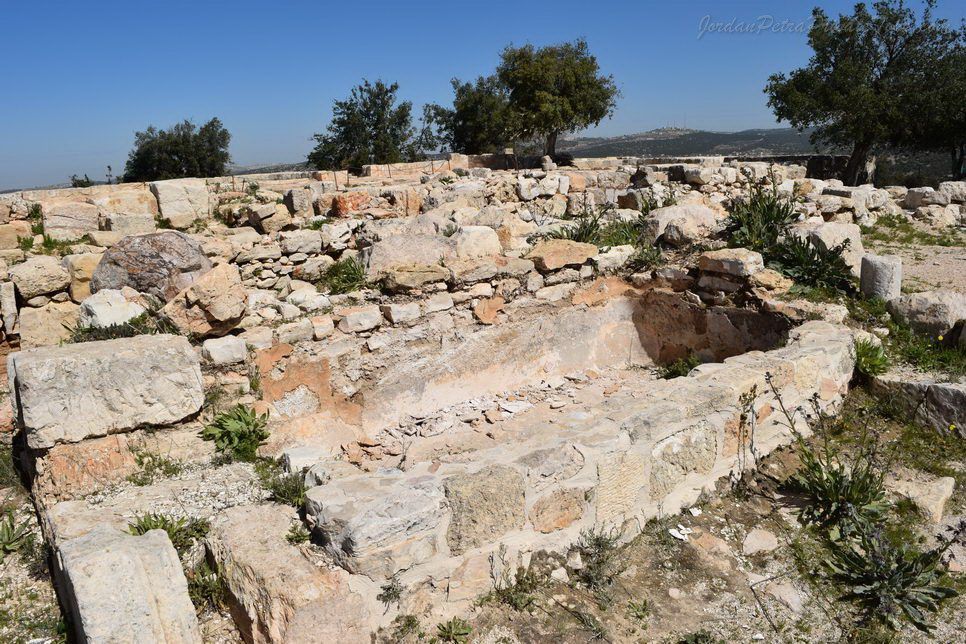
While the churches lie in the ruins, the luminous mosaic floors remain along with the outline of the two Byzantine churches. The vantage point provides an expansive view into the fertile Jordan River Valley. Yet rather than the impressive mosaic details or the giant cornerstones of the church ruins, an oak tree grows in the central place of worship at Mar Elias. Located at the eastern end of the upper church, the tree is adorned by hundreds of ribbons and pieces of cloth, testimony to a living tradition among Christians and Muslims to pray at the tree for health and healing.
Though Mar Elias was named an official pilgrimage destination by the Vatican in the year 2000, visitors will often find Tel Mar Elias completely empty of tourists, giving the opportunity for reflection and introspection, and giving a more authentic and solitary experience.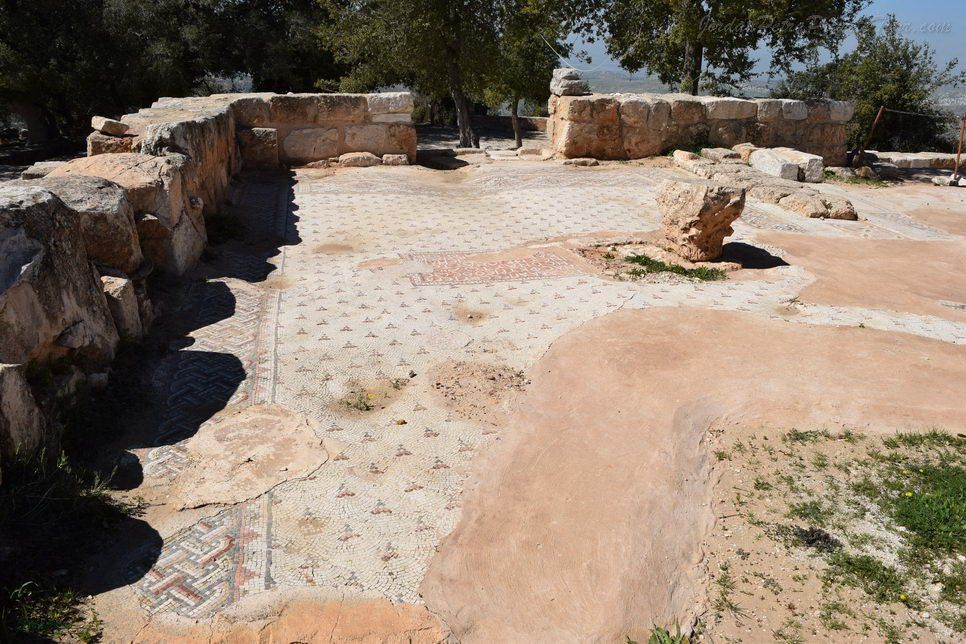
Tradition assigns the birthplace of the prophet to Listib, a nearby ancient village and site of an Ayyubid-Mamluk period mosque (approximately 12th – 13th Century AD). A place of worship for at least 14 centuries, Mar Elias sits upon layer upon layer of Islamic, Byzantine and Roman remains. The small lower church, which is the older of the two, has an unusual cruciform shape, and although only the lower courses of some walls remains, the structure is still used as a place of worship. The upper church is one of the largest Byzantine churches discovered in Jordan and has likely been a significant place of pilgrimage over many centuries. This church contains an extraordinary wealth of Byzantine mosaic floors with varying geometric patterns and a dedication in Greek dated 622 AD, which mentions Prophet Elias.
Nowadays, local Muslims and Christians still visit this site and practice their rituals; praying, lighting candles and tying ribbons to the trees.
Tel Mar Elias is run and managed by the Ministry of Tourism and Antiquities. The site is open 7 days per week except religious holidays, from 8am to 6pm in the summer, and 8am to 4pm in the winter. Entrance is free of charge.
